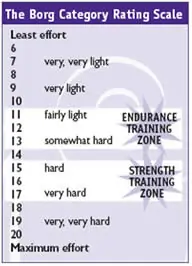Intervals are hard. It doesn't matter if they are short, high-power efforts or longer tempo and threshold efforts; they require your attention, diligence, and heart.
There are many great models you can use to build your intervals. From the elegant Maximal Aerobic Power model Thibault espouses, to Peak Power, the Critical Power approach, or even a simple time-based approach. Pez has written more than a dozen articles on interval training in the last few years alone. If you haven't read them do a quick search for "intervals" and you'll read some really sound science. But there is more to intervals than modeling.
Make Continual Improvement
For starters let's talk about pacing of your intervals. Time and time again athletes approach their intervals as if their lives depended on it. Whether it's a one minute non-aerobic effort or a 30-minute tempo/threshold effort, it is fairly common for athletes to approach these attempting to keep the dogs at bay by over-reaching in the first half and struggling to hold on towards the end. You click that timer and "Ding!", your brain goes into overload-attack mode.
In 2005/06, Charles Howe wrote about using perceived exertion and negative splits, among other things, as pacing strategies employed in World Championship, Olympic, and World Record running performances since 1911. His meta-analysis provides a real-world stratagem that you might consider for your training efforts, especially longer tempo and threshold-level workouts (over five minutes).

Gunnar Borg's classic 6 to 20 Ratings
of Perceived Exertion (RPE) scale
His write up noted that roughly 66 percent of world class 10,000 meter performers used a negative pacing strategy; that is, energy expenditure is higher in the second half of their race than the first. The difference was typically expressed in the range of 50.1 (+/-0.64) percent split in times, so it's not a big difference in your pace, just a slightly different effort at outset.
For example, on a 20-minute cycling effort, Howe recommends to pace approximately 10 percent below target power for the first minute, building to an average of about 95 percent of average target power by the fifth minute and 97.5 percent by the halfway mark. This will push you towards the goal of a 49/51 split on the interval in total.
Charles Howe also put forward a slightly modified Rating of Perceived Exertion (RPE). Typically, most of us use Borg's RPE (a scale to 6 to 20), or else a modified version ranging from 1 to 10 for our efforts.
Howe and others have a slightly amended version of a 1 to 10 scale that I think is quite appropriate. What I like about the modified version is that it tries to more explicitly lay out and differentiate different sensations of fatigue.
Functional responses to perceived exertion levels during moderate to high-intensity training—proposed by Howe.
4: Workout easily completed. Chosen intensity or duration were either too low (easy) or too short, respectively, such that average power rose (or could have been raised) substantially throughout workout, or else power/duration were intentionally set low due to training status, recent layoff, illness, etc.
6: Workout finished with some difficulty towards end of session; completion somewhat, but not seriously in doubt. Intensity/duration about right, as power/speed remained steady or gradually increased throughout, and could not have been sustained much or at all beyond end of workout.
8: Extreme difficulty and serious doubts about ability to finish encountered during middle and latter stages of session. Intensity/duration too high/long, or else recovery inadequate, since speed/power either faded during latter stages of workout, or workout was not quite completed.
10: Workout terminated well short of goal (early or middle of session) due to illness or accumulated fatigue, or intensity/duration not being sustainable (unrealistically high/long).


